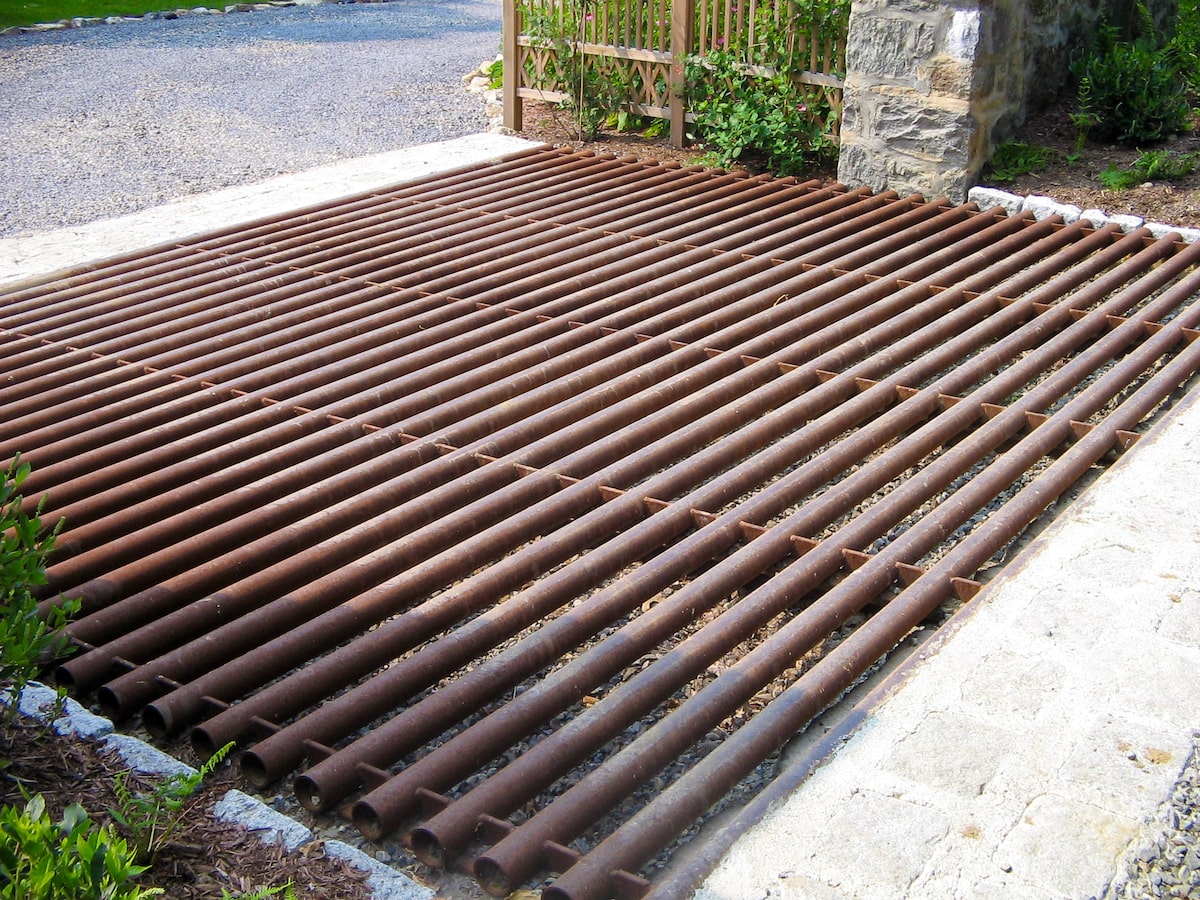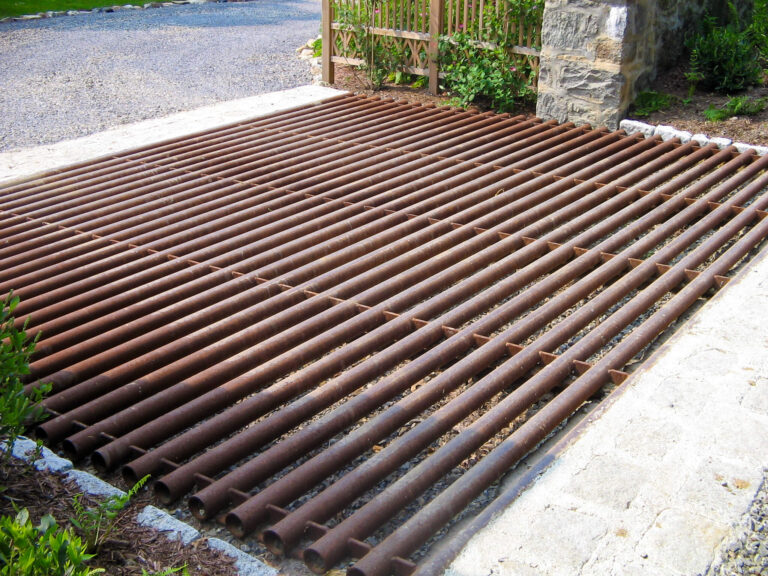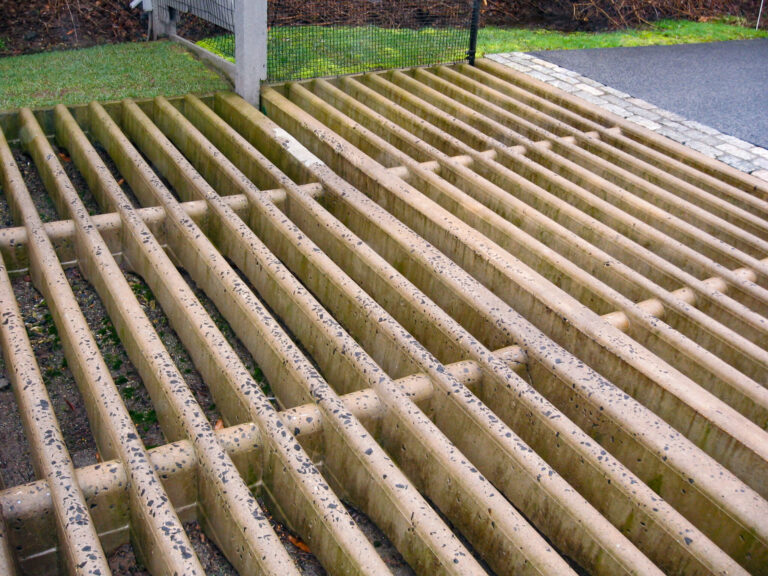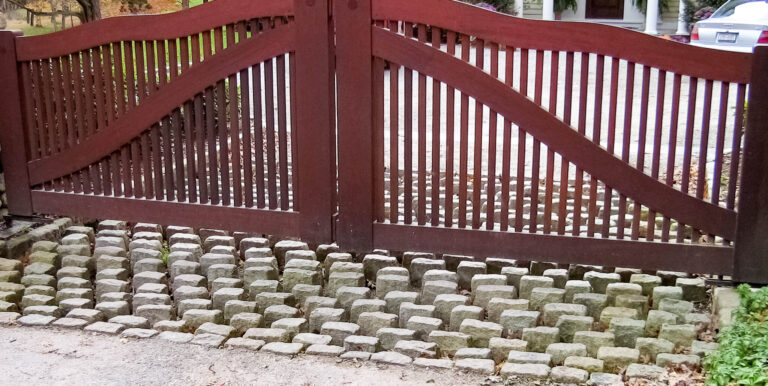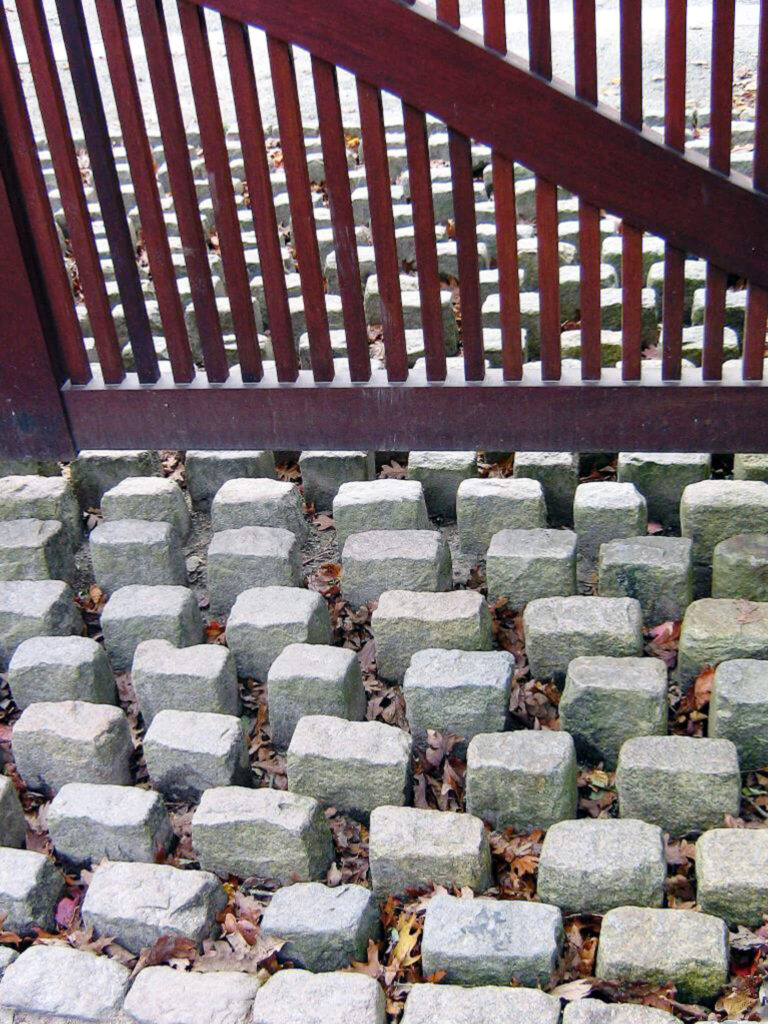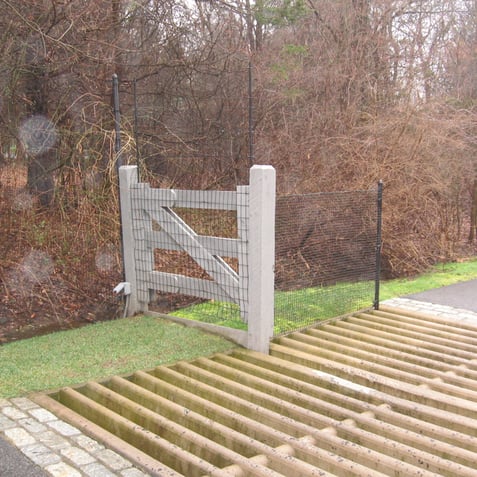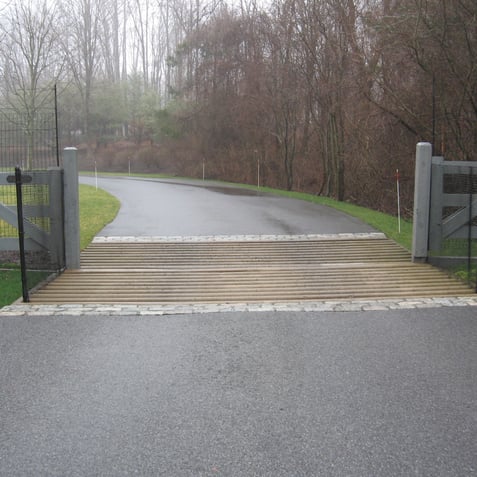You are using an outdated browser. Please upgrade your browser to improve your experience.
One of the challenges of living in a rural area is attempting to control the animal population, both wild and domesticated. Deer and cattle can be detrimental to your lawn or gardens if they wander into restricted areas. While deer fences and gates can help, it can be a hassle to constantly open and close a gate. And if a gate is accidentally left open, your cattle could escape or unwanted animals could enter.
Enter the cattle guard. At their simplest, cattle guards are grates made of metal, stone, or concrete that are placed over a pit. They work for two reasons: one, animals like deer and cattle have very poor depth perception, meaning that they can’t tell how deep the pit is, so they avoid stepping on it. And two, the narrow rails of the grate are uncomfortable for their hooves, preventing them from getting a steady footing as they attempt to pass over it.
By preventing animals from crossing onto your property while allowing vehicles and people to pass freely, cattle guards offer a durable, low-maintenance solution to animal control. With nearly five decades of experience in rural property solutions, our skilled craftsmen have perfected cattle guard construction techniques that deliver reliable animal control and lasting durability.
Cattle Guard Materials
Metal cattle guards are typically made from heavy-duty steel and are ideal for areas with heavy traffic or high-speed roads. Stone cattle guards can be a more natural option, blending in with the surrounding landscape and providing a more rustic look. Concrete cattle guards are also a common choice, as they’re durable and long-lasting.
Whatever material you choose, custom cattle guards can be made to fit your specific requirements and design preferences. Our professionals ensure each cattle guard installation uses premium materials selected for your property’s specific traffic loads and environmental conditions.
Will Deer Cross a Cattle Guard?
Cattle guards are very effective at deterring deer from crossing, but they may still attempt to jump across them or navigate a path through them if they’re highly motivated. Increasing the width of your cattle guard and deepening the depth of the pit beneath it are both ways to make them harder to bypass. Surrounding the cattle guard-protected area with a fence will also serve as a further deterrent.
How Much Weight Can a Cattle Guard Hold?
The exact amount a cattle guard can handle depends on the materials and the installation. Standard steel cattle guards can typically support between 25 to 32 tons per axle, which is sufficient for most farm vehicles and even loaded semi-trucks.
When to Install a Cattle Guard
A cattle guard is a good choice when you have a relatively narrow path into or out of an area; for example, a place where you would put a gate is typically a good spot for a cattle guard. Some other scenarios where a cattle guard can be useful are:
- New Construction or Remodeling: If you’re building a new fence or remodeling your property, a cattle guard can be a valuable addition to keep your livestock contained.
- Road Access: If you have a driveway or road that connects to a public thoroughfare, a cattle guard can prevent your animals from straying onto the road.
- Property Line Protection: If deer or cattle frequently wander onto your property, a cattle guard can define your space more clearly.
Our consultation process helps identify optimal cattle guard placement for maximum effectiveness and convenience.
Free On-Site Consultation in Connecticut, New York, and New Jersey
Based out of Westchester County, NY, Garon Fence serves Connecticut, New York, New Jersey, and the greater New England area. Call 914-666-5596 or contact us online to visit our factory showroom in Bedford Hills or arrange a free, on-site consultation. Check out the Areas We Serve and get in touch about custom cattle guard installation near you.

